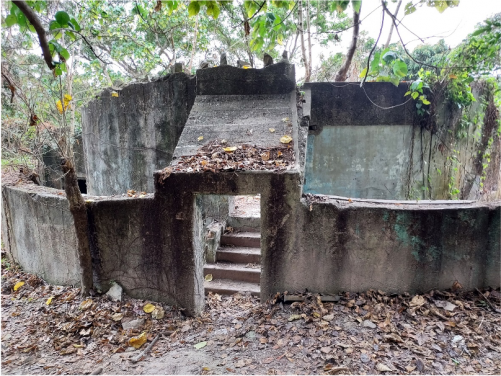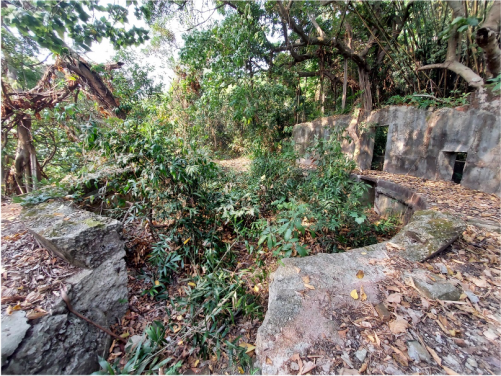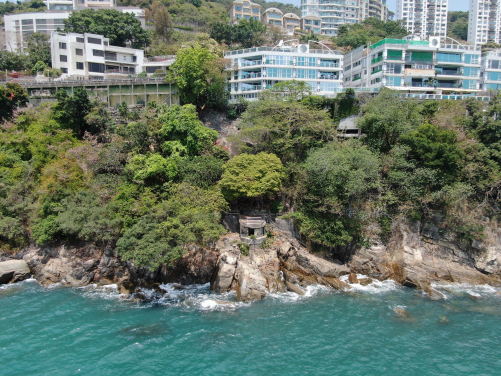Media
Finding a partly forgotten urban gem
Decoding some enigmas of the Jubilee Battery
25 Apr 2021
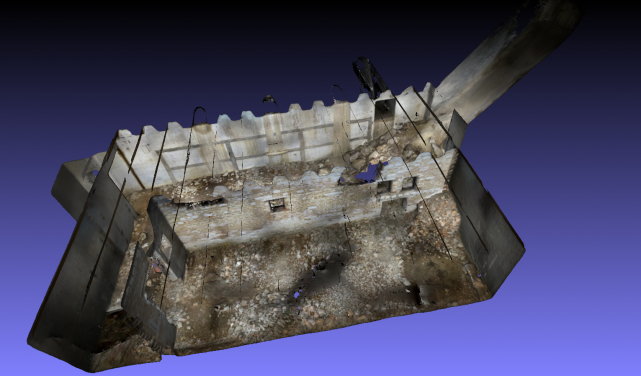
3D scan measures of No.2 Magazine. They are the first known 3D scan measures of the relics. (Photo credit: Mr TAN Yuk Kor)
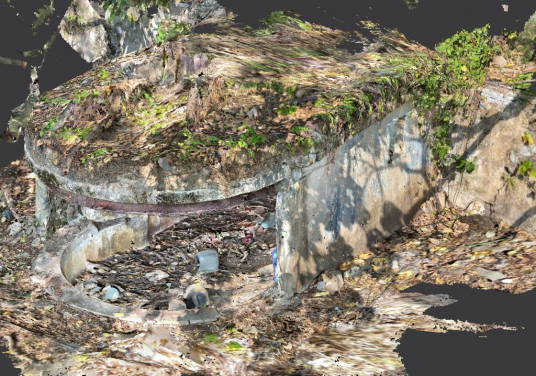
3D scan measures of No.1 Defense Electric Light (DEL1). They are the first known 3D scan measures of the relics. (Photo credit: Mr TAN Yuk Kor)
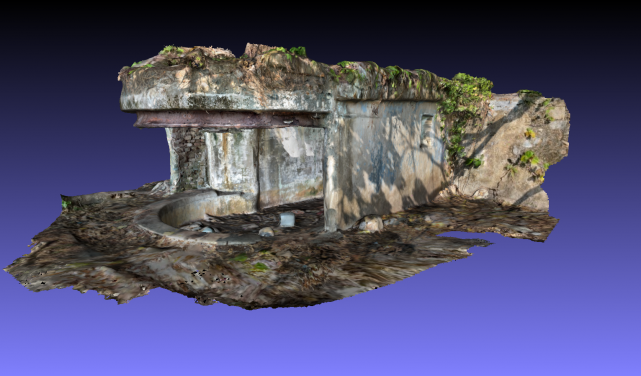
3D scan measures of No.1 Defense Electric Light (DEL1). They are the first known 3D scan measures of the relics. (Photo credit: Mr TAN Yuk Kor)
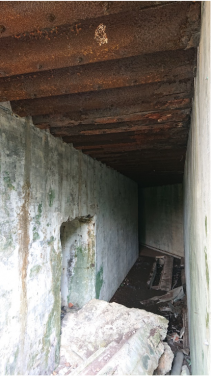
The Engine Room, located below the University of Chicago campus (photo credit: Professor Lawrence Lai)
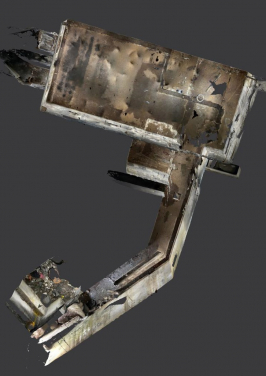
3D scan measures of the Engine Room. They are the first known 3D scan measures of the relics. (Photo credit: Mr TAN Yuk Kor)
- 1 / 12
- 2 / 12
- 3 / 12
- 4 / 12
- 5 / 12
- 6 / 12
- 7 / 12
- 8 / 12
- 9 / 12
- 10 / 12
- 11 / 12
- 12 / 12
The Jubilee Battery was one of the battlefields in the defence of Hong Kong in December 1941. During the occupation, the Japanese used a magazine as a cell for POWs. After the war, the site was used as a camp for KMT soldiers, then squatters, cottage industries, and by the Special Branch of the Hong Kong Police.
A research team led by Professor Lawrence Lai at the Department of Real Estate and Construction of the University of Hong Kong (HKU) considers the site of high conservation value and should be graded and comprehensively conserved as a heritage site. Jubilee Battery has three well preserved gun emplacements. and is far bigger than Chung Hom Kok Battery (which only has a single gun emplacement left). Further conservation planning can also take advantage of the fact that part of the battery has already been protected as part of the Chicago University campus, which can be used as an anchor for such planning.
Questions and Answers concerning the Jubilee Battery:
1. From a historical and military (political science) angle, what is the value of this battery site?
Situated along the coastline below the west side of Mount Davis, this site is one of the three 6-inch coastal defence gun batteries (the others being Pak Sha Wan, Chung Hom Kok, and Aberdeen Batteries) that saw action during the Second World War.
2. This battery, being scenic and accessible by public transport, has a long history of 82 years. Why has it been neglected till very recently?
Wild vegetation has grown on the site (due to lack of land management or sensitivity to conservation needs) and has concealed access routes to the location. As many of the buildings have been engulfed by thorny bushes, it is natural that it has not been frequently visited by the general public.
3. Why has the University of Chicago only conserved one of the three gun emplacements?
Only a small section of the battery is situated on the University of Chicago campus, including the Number 2 gun emplacement and former government buildings which stand nearby. The remaining gun emplacements have therefore been neglected.
4. What are the achievements and drawbacks of the University of Chicago’s conservation efforts?
Though well designed and user friendly, its conservation approach ignores the original features of the gun emplacement and disregards the underground engine room.
5. Are there any hazards in visiting the site?
Some of the access paths have subsided due to soil erosion and are surrounded by thorny vegetation. The foundation of some structures have also been damaged by previous works to clear squatter dwellings, and there is a risk of falling through empty sections of ground. Furthermore, the site is home to a number of menacing insects such red ants and bees. As such it is dangerous to visit the site unless accompanied by an expert who is familiar with the area.
6. Who owns this place?
While part of the site is owned by the University of Chicago, the remaining area is Unallocated Government Land which falls under the control of the Lands Department.
7. What happened here during the Battle of Hong Kong (8 December 1941 to 25/26 December 1941)?
This battery was a battlefield during the Battle of Hong Kong. The British forces stationed here (26 Coastal Bty) fired on enemy forces landing on Lamma island on 11 December 1941. This battery, as well as the battery located above atop Mount Davis, sustained multiple bombings from the Japanese forces. On 25 December 41, on the day of the English surrender, the garrison destroyed all guns in the emplacements.
8. Did any tragedies occur here during the Japanese Occupation of Hong Kong (26 December 1941 to 15 August 1945)?
During the occupation, the Japanese used a magazine as a cell for POWs, these built works can still be found here today.
9. What happened to the battery site after the War?
The colonial administration used this site as a camp for KMT soldiers. As they were harassed by local left wing groups, they were later relocated as refugees by ferry to Rennies Mill (today Tiu Keng Leng, Tseung Kwan O New Town). Then, squatters, cottage industries, and the Special Branch of the Hong Kong Police moved into this unique place of Hong Kong.
10. What is the government’s contribution to the conservation of this battery site?
The government (AAB) has surprisingly NOT given any grading to this place at all, but has closed the road to the battery. This road has deteriorated substantially due to soil erosion, root action and lack of maintenance.
11. What light does this place shed on the housing, economic and political development of Hong Kong?
Mount Davis was a microcosm of Hong Kong’s post war housing and economic development, witnessing a succession of squatting, institutional and public housing, cottage industries, Cold War internal security use etc.
12. How shall we treat this largely forgotten site? How should we conserve and promote this largely forgotten site?
This site should be graded and comprehensively conserved as a heritage site. In terms of how much of the site remains intact, this battery is far more complete than the battery at Chung Hom Kok, and the view from the site is far more impressive than that from the Chung Hom Kok Battery, therefore deserving of a Grade II historical site grading or above. From a long term planning perspective, the government should make and implement a conservation plan, including reopening the (now closed) access road, repairing and making safe but accessible the searchlight shelters, magazines and associated works, as well as strengthening the nearby slopes to prevent ongoing damage from nature while at the same time ensuring that the public can appreciate the historical site by providing simple but clear sign boards (with QR codes) explaining where people are, what happened there and what each structure was for.
13. How does this battery site differ from other similar batteries?
This site is far bigger than Chung Hom Kok Battery (which only has a single gun emplacement left) and is now a park. Jubilee Battery also has three well preserved gun emplacements. In addition to this, it is located in a highly accessible urban location with good public transport links. Further conservation planning can take advantage of the fact that part of the battery has already been protected as part of the Chicago University campus, which can be used as an anchor for such planning.
14. How long has the HKU team studied this site? Why focus on it now?
Our first visit to the area was in summer 2009. At the time the entire site was covered in dense vegetation, hindering detailed investigation. After many years of painstaking effort, and several large typhoons that blew down some of the large trees, it was possible to visually identify the military features on the site. We discovered that the extent of the buildings on the site was greater than previously imagined. The development of the University of Chicago campus in Hong Kong raises the curtain for public discussion on the conservation of this interesting place.
For media enquiry, please contact: Ms Melanie Wan, Communications and Public Affairs Office, HKU (Tel: 2859 2600 / Email: melwkwan@hku.hk)

